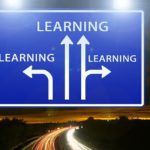
June 5, 2016
A molecular invisible ink is now available. Called a molecular-scale messaging sensor (m-SMS), this is part of a secure, chemically based system designed to transmit and reveal secret messages. Created by Weizmann Institute of Science researchers, this unique new system was recently published in Nature Communications and reported in mainstream press by The Daily Mail,
When a chemically encrypted message is created using the m-SMS method (which produces a wide range of nearly unpredictable emission fingerprints), exposed to every day chemicals (such as cola or mouthwash) and scanned by a hand held device that measures fluorescence, the encoded chemical message is revealed.
The m-SMS technology uses fluorescent molecular signals that are complex but effective because it offers an even more secure way of overriding electronic systems, which are currently a global security concern. The reason it is more secure is because it combines some key steps: steganography, encryption and password protection.
Steganography and encryption are nothing new. Spies have used coded or encrypted messages for centuries to hide information – from the Greek secret wax writing tablets to lemon juice used in World War I. The problem is that over time these methods became known so more complex secret systems like Enigma came about. Now the Weizmann system embraces molecular and biomolecular steganographics where specific chemical stimuli trigger the appearance of text.
Weizmann’s Dr David Margulies who led the work told the Daily Mail: “Here, we describe a method that enables one to conceal multiple different messages within the emission spectra of a uni-molecular fluorescent sensor.
“Similar to secret inks, this molecular-scale messaging sensor (m-SMS) can be hidden on regular paper and the messages can be encoded or decoded within seconds using common chemicals, including commercial ingredients that can be obtained in grocery stores or pharmacies.”
But how does it work? In simple terms you:
- Encode the message using a simple cipher, where a letter is replaced by a set of numbers.
- Dissolve the m-SMS molecule in your chosen every day chemical solution – for example cola – and using a special handheld device, measure the amount of light (fluorescence) it transmits at each wavelength. As fluorescence is measured in arbitrary units to get the same numbers for the coding and decoding the measuring device of the receiver must be set up in the same ways as the sender, hence another level of security.
- Add the value of this fluorescent measurement to your letter number to provide the final code: for example if you measure 689 at 500 nanometers (nm) and your chosen number for the letter O is 4350 – the total value for the letter O is 5039.
- Do this process for each letter of each word of your message and once complete, transmit the numbers and the fluorescent molecule to the receiver. This can be done by drying the molecule onto paper.
- Place the coded paper into the chosen chemical – cola in this case – and measure the light released with a matching handheld device and decode the message.
The password protection comes about by making the light given off by the molecule dependent on the order in which you add other chemicals to it.
In the study 12 participants, including 10 untrained users, were able to successfully reveal 23 messages.






